SELECTED Publications
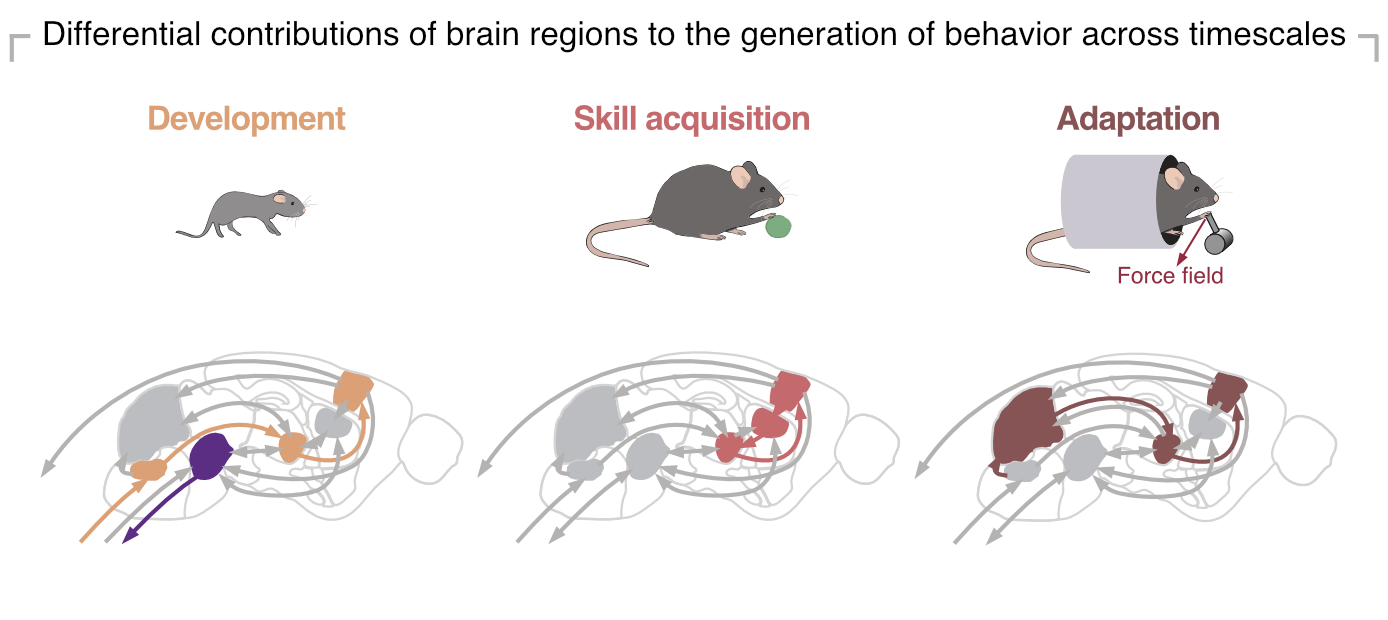
Integrating across behaviors and timescales to understand the neural control of movement
Jimmie M. Gmaz, Jason A. Keller, Joshua T. Dudman*, Juan A. Gallego*
In this opinion piece, we review evidence suggesting that the intricate connectivity of brain circuits enables flexible interactions across structures that change under different behavioural demands, such as during acquisition, execution, or adaptation of a skill. Observing the nervous system across multiple behaviours and timescales may be necessary to understand the neural control of movement.
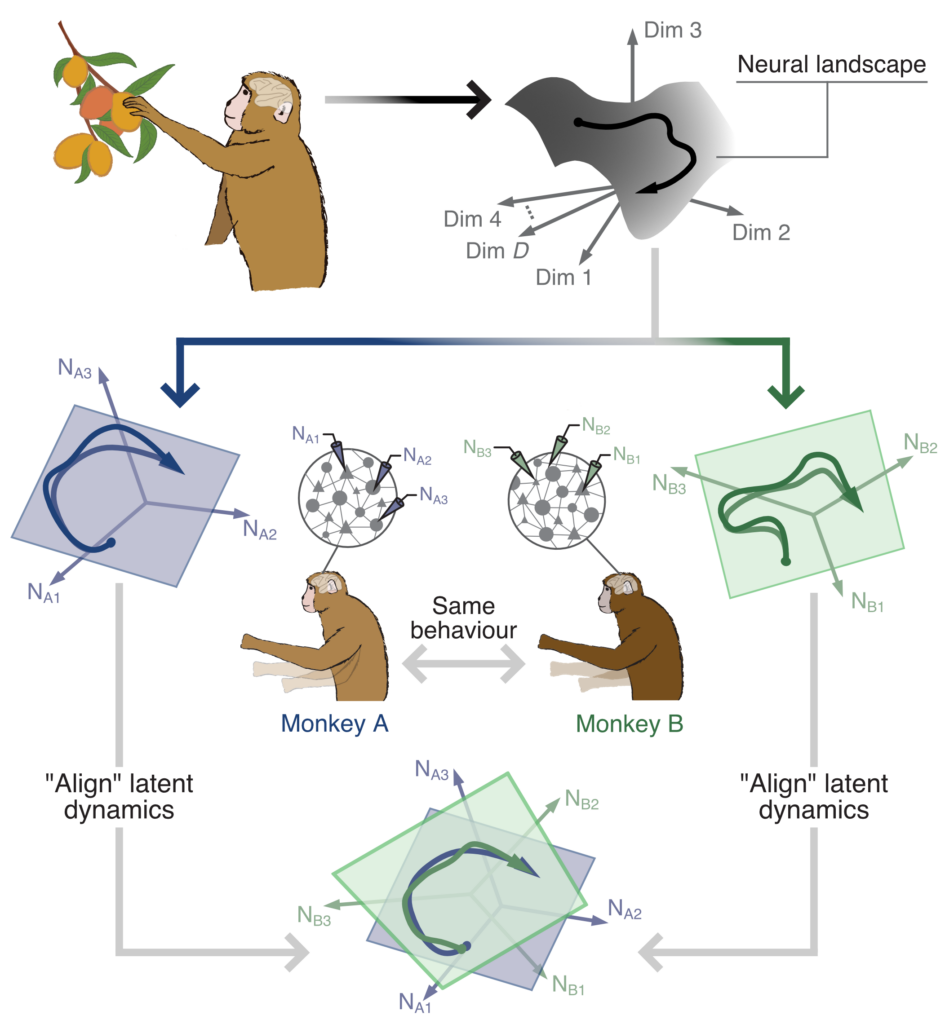
Preserved neural dynamics across animals performing similar behaviour
Mostafa Safaie*, Joanna C. Chang*, Junchol Park, Lee E. Miller, Joshua T. Dudman, Matthew G. Perich*, Juan A. Gallego*
We establish that despite each individual brain's being unique, when engaged in the same overt or covert behaviour, different animals from the same species generate preserved neural population "latent" dynamics. These preserved latent dynamics allow decoding the intended or executed movements of one individual using a model trained on data from a different individual.
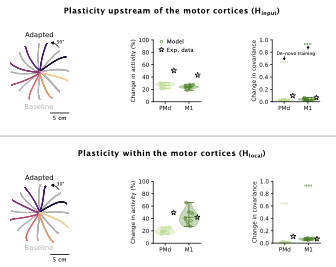
Small, correlated changes in synaptic connectivity may facilitate rapid motor learning
Barbara Feulner, Matthew G. Perich, Raeed H. Chowdhury, Lee E. Miller, Juan A. Gallego*, Claudia Clopath*
We use multiregion recurrent neural network models to lend further computational support to our previous experimental work suggesting that visuomotor adaptation may not necessitate synaptic changes in the motor cortices (Perich et al Neuron 2018). We also establish that such changes may be small and low-dimensional, which makes it hard to identify them from neural recordings.
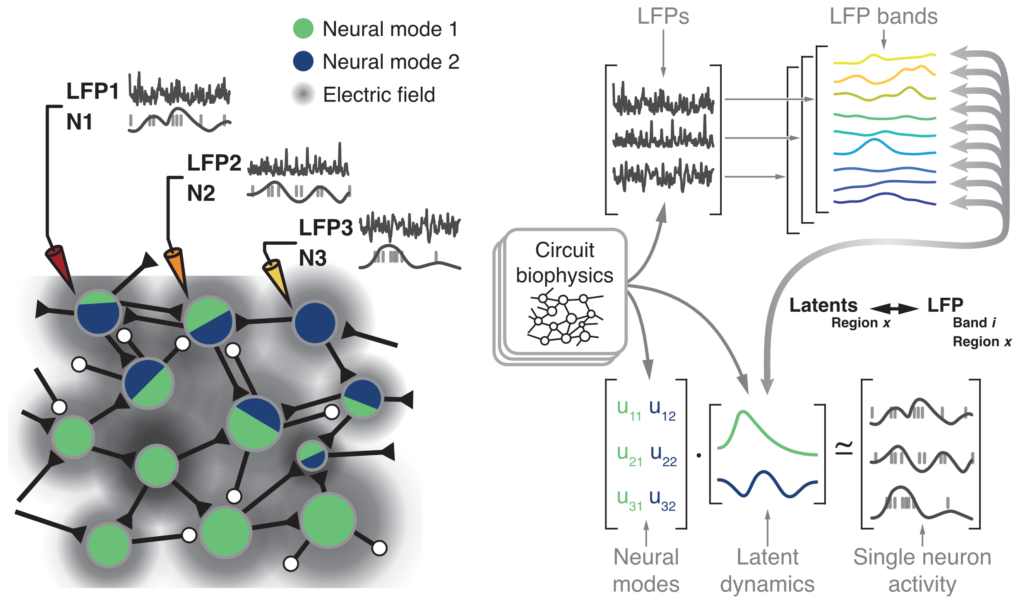
Local field potentials reflect cortical population dynamics in a region-specific and frequency-dependent manner
Cecilia Gallego-Carracedo, Matthew G. Perich, Raeed H. Chowdhury, Lee E. Miller, Juan A. Gallego
We describe a robust relationship between intracortical local field potentials that arise from synaptic processes in a neural circuit and its latent dynamics. This relationship, which cannot be inferred from the activity of single neurons, is frequency-dependent, changes across sensorimotor cortical regions, and remains stable between movement planning and execution.

Going beyond motor cortex to improve brain-computer interfaces
Juan A. Gallego, Tamar R. Makin, Samuel D. McDougle
In this opinion, we propose that overcoming the limitiations of current motor cortical brain-computer interfaces will require recording from a broader range of brain regions because motor cortex paradoxically has both "too little" information about the behaviour, and "too much" information about nonmotor processes.
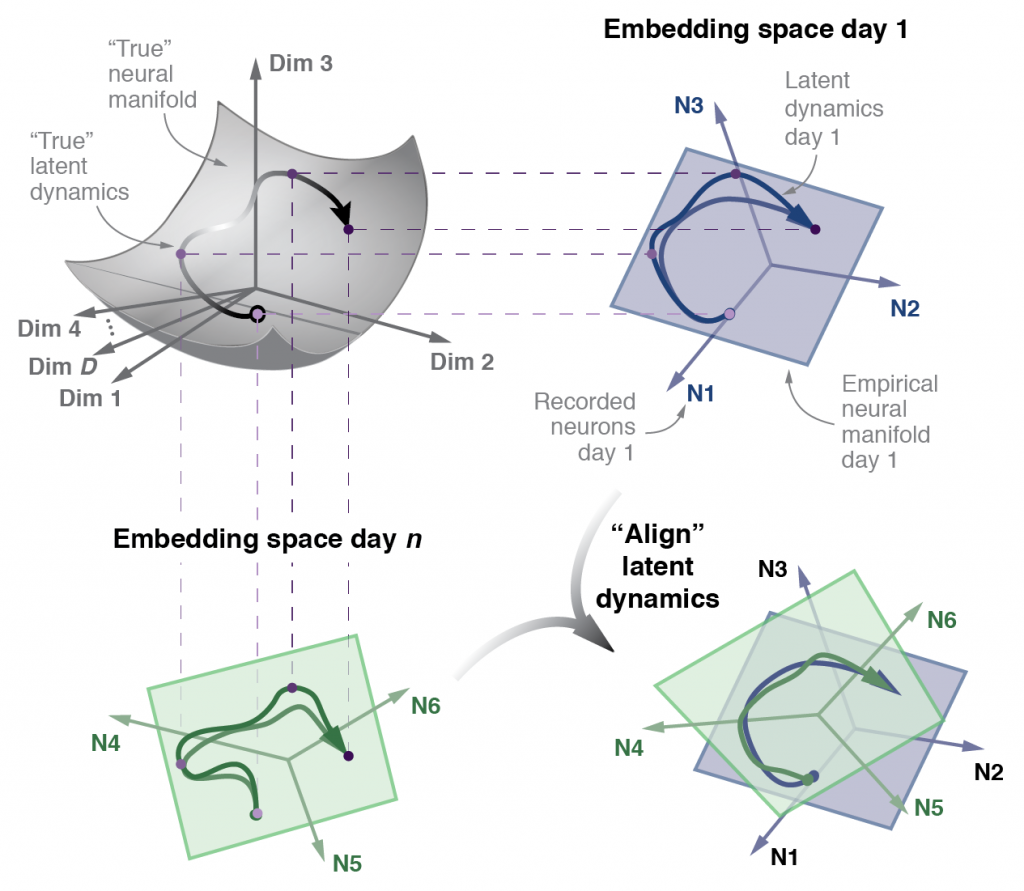
Long-term stability of cortical population dynamics underlying consistent behavior
Juan A. Gallego*, Matthew G. Perich*, Raeed H. Chowdhury, Sara A. Solla, Lee E. Miller
We show how the repeated execution of a given behaviour is associated with consistent “latent” neural population activity. This preserved activity allows building brain-computer interfaces that are stable for unprecedentedly long timespans –years, instead of weeks.
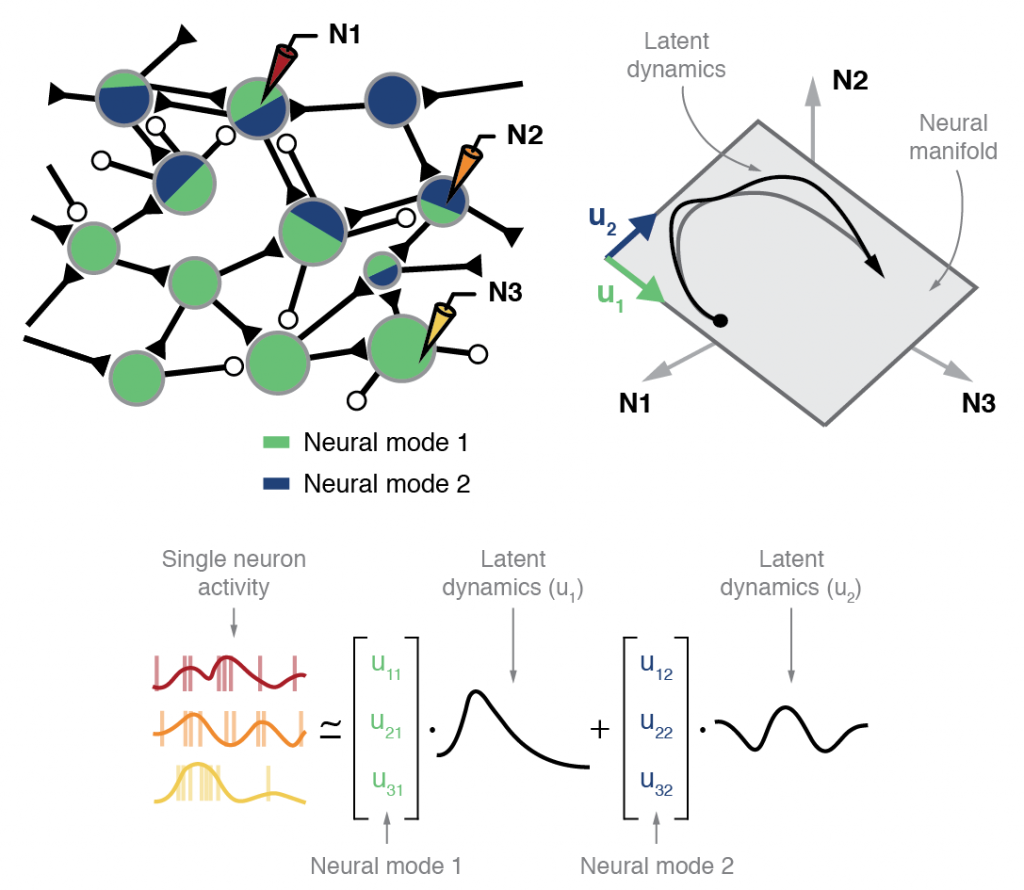
Neural manifolds for the control of movement
Juan A. Gallego, Matthew G. Perich, Lee E. Miller, Sara A. Solla
In this perspective article, we propose that cortical computation is not based on the independent modulation of the activity of single neurons, but on specific population-wide activity patterns that span a neural manifold.
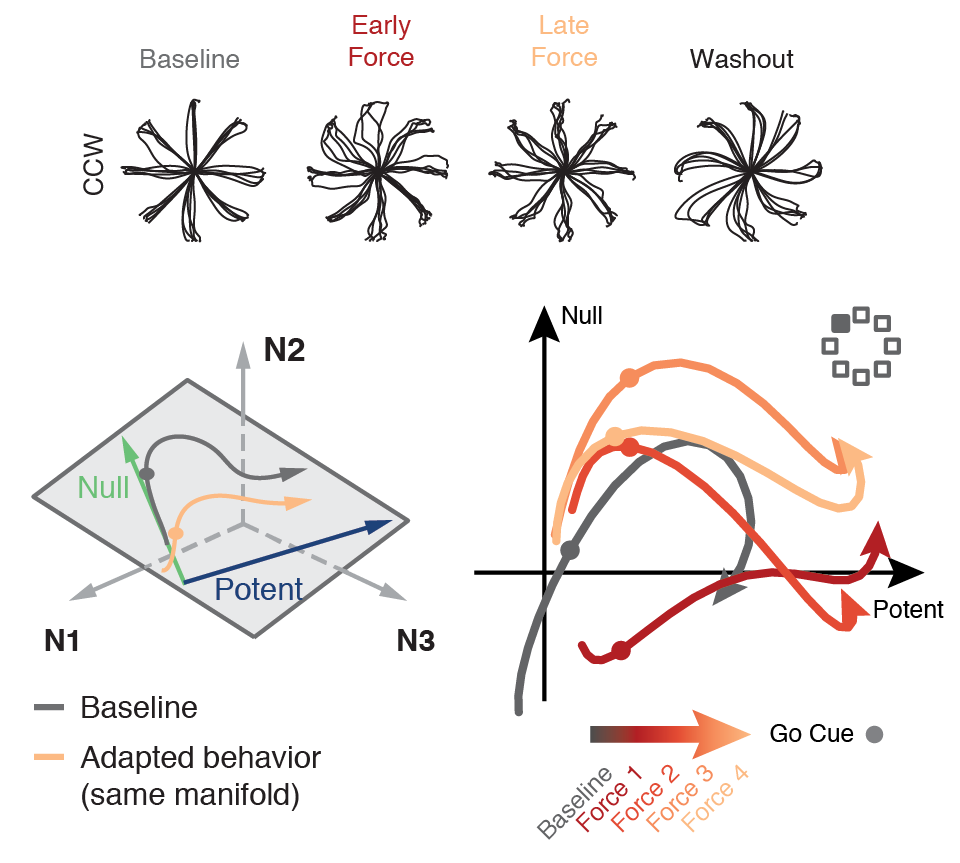
A neural population mechanism for rapid learning
Matthew G. Perich, Juan A. Gallego, Lee E. Miller
We show that monkeys learn to counteract a force perturbation applied to their arm without changing the functional connectivity among neurons. Instead of drastic plastic changes in the motor cortices, learning is associated with an adapted motor plan represented by new activity patterns within a preserved neural manifold.

Cortical population activity within a preserved neural manifold underlies multiple motor behaviors.
Juan A. Gallego, Matthew G. Perich, Stéphanie N. Naufel, Christian Ethier, Sara A. Solla, Lee E. Miller
Previous studies had shown that the relationship between the activity of individual neurons and behaviour changes quite significantly across laboratory tasks. Here, we show that, in contrast, their associated neural manifolds and the neural population dynamics within them are relatively well preserved.
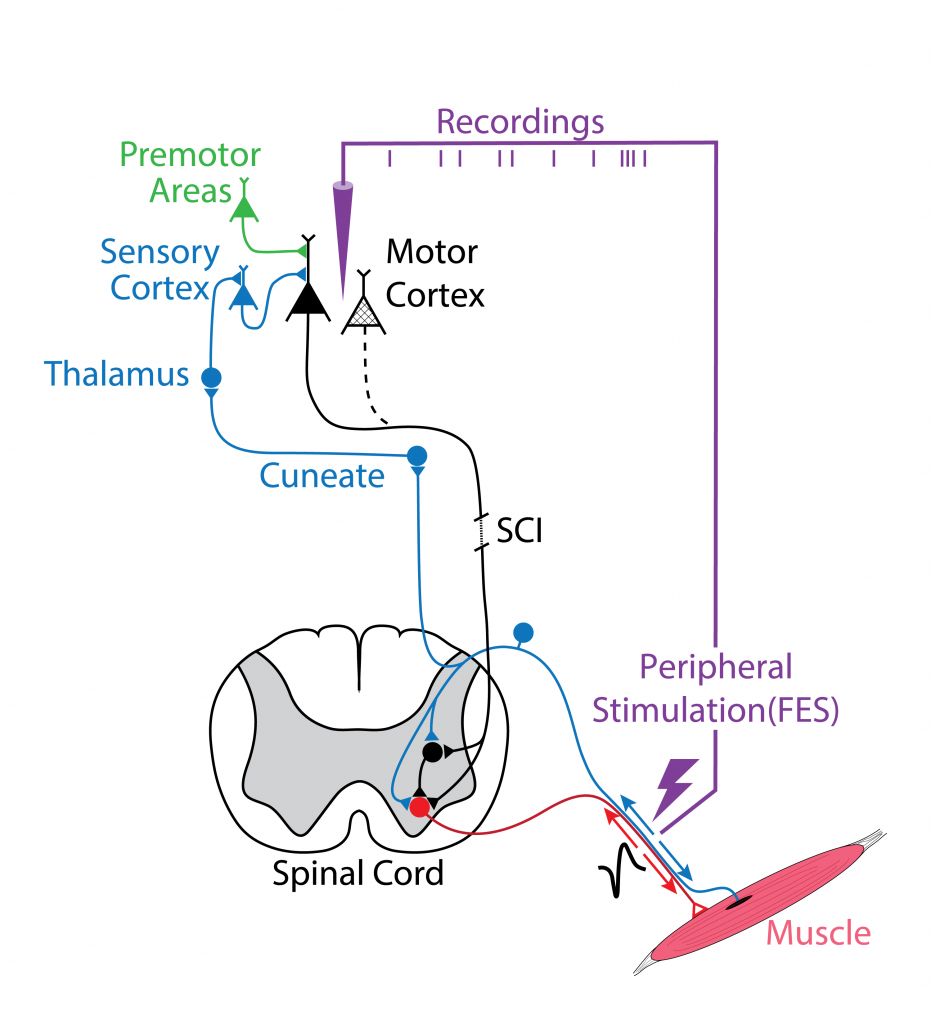
Brain-controlled neuromuscular stimulation to drive neural plasticity and functional recovery
Christian Ethier*, Juan A. Gallego*, Lee E. Miller.
We discuss how appropriately patterned stimulation of neural tissue —brain, muscle or nerves—, controlled based on the user’s intent, can be used to induce adaptive neural plasticity and lasting recovery after a neurological injury.
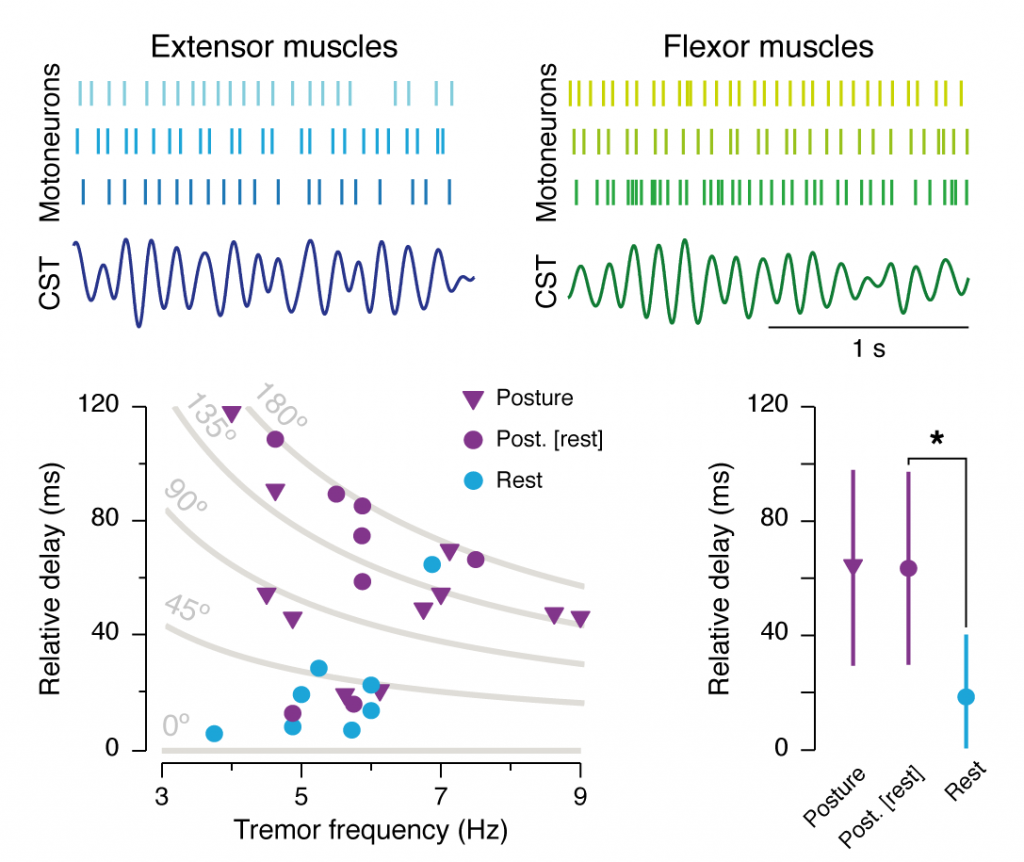
The phase difference between neural drives to muscles in essential tremor is associated with the relative strength of supraspinal and afferent input
Juan A. Gallego, Jakob L. Dideriksen, Ales Holobar, Jaime Ibáñez, Vojko Glaser, Juan P. Romero, Julián Benito-León, José L. Pons, Eduardo Rocon, Dario Farina
Using a combination of computational models and non-invasive motoneuron population recordings, we show that spinal afferent circuits play a very important role in determining the properties of tremor in people with essential tremor.
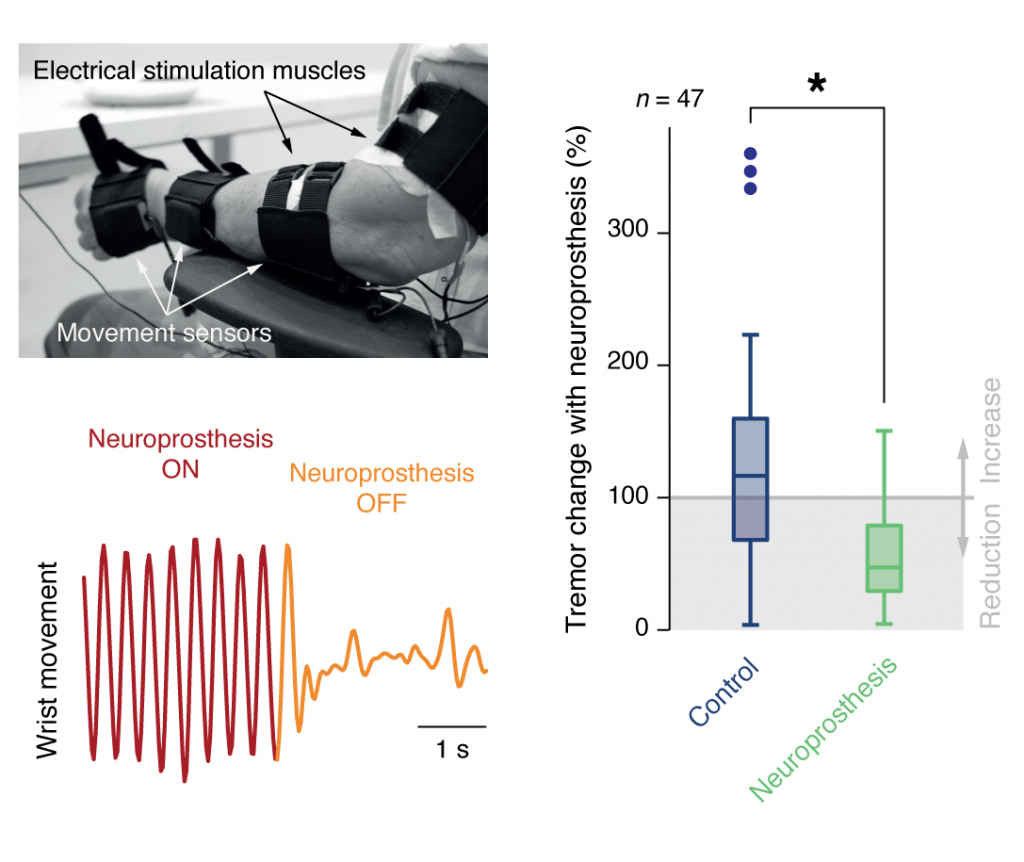
A neuroprosthesis for tremor management through the control of muscle co-contraction
Juan A. Gallego, Eduardo Rocon, Juan M. Belda-Lois, José L. Pons.
We present a neuroprosthetic that monitored a patient’s tremor to suppress it using controlled electrical stimulation of muscles. Preclinical validation showed a decrease in tremor amplitude of fifty percent in subjects with either Parkinson’s disease or essential tremor.
Copyright © Be.Neural Lab
